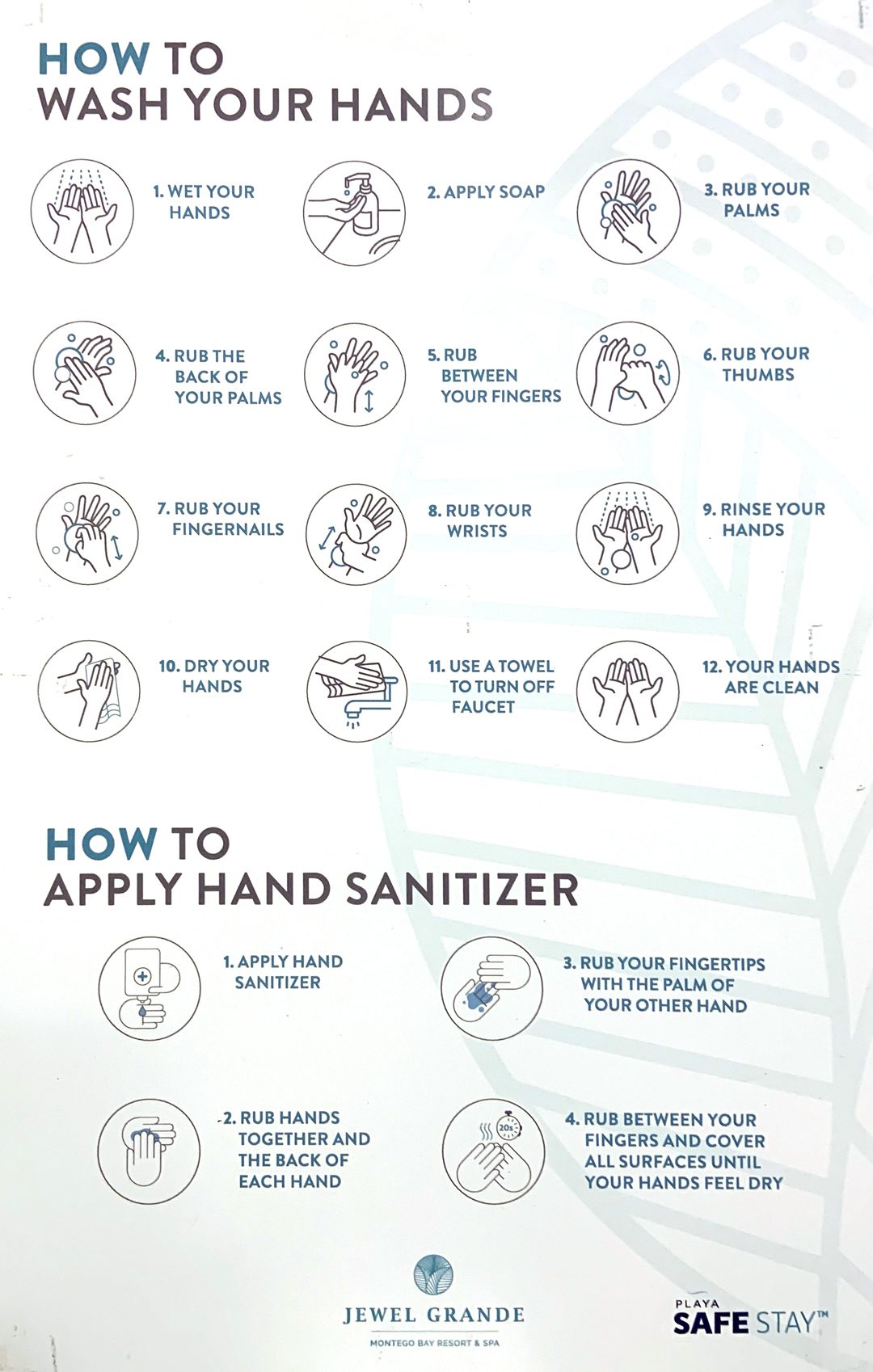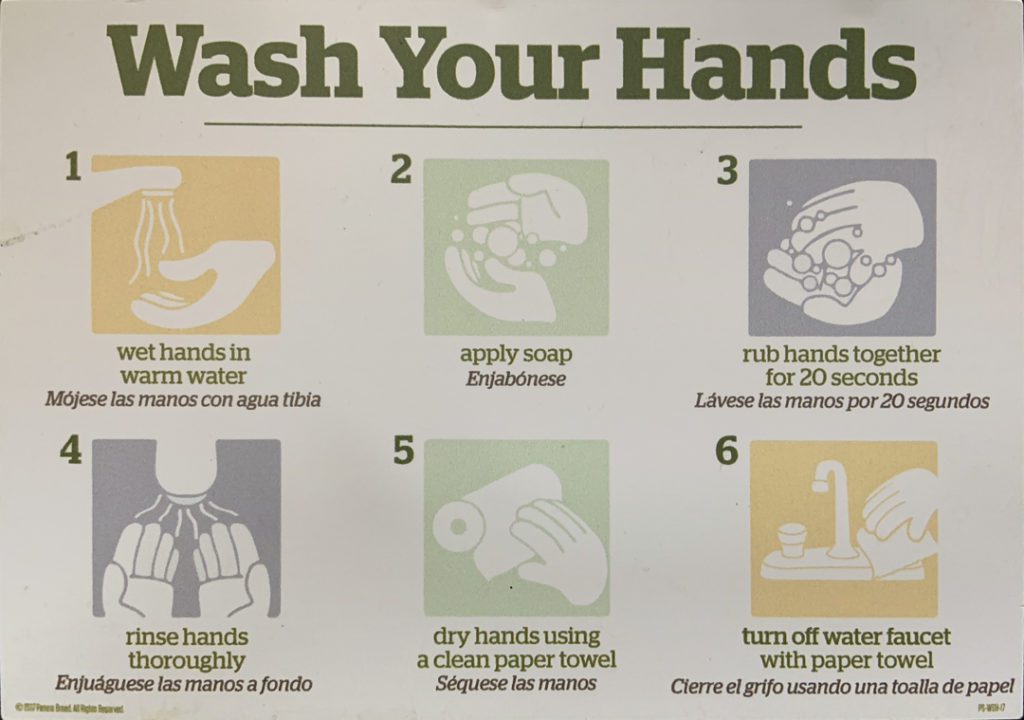Marketing lessons often appear in random, and potentially awkward places.
I recently found signs in two men’s rooms that explained… wait for it… how to wash your hands!
While the smart-aleck part of me was thinking, “Didn’t we learn this in kindergarten?” The practical side of me was hoping it was a remnant from our time with COVID and the protocols put in place.
Either way, what caught me off guard was how drastically different each one shared the simple practice of washing your hands. I couldn’t help but see storytelling lessons in the various approaches and insights into audience engagement.
So, after confirming no one else was in the men’s room, I took photos of each.
Men’s Room 1

The first men’s room is at a four-star resort in Jamaica. Their sign contains an excessive amount of information and a 12-step process for washing hands. Followed by a 4-step process for using hand sanitizer.
We were guests of this resort, while we attended the Jamaica Mastermind with Terry Weaver and members of The Thing community. Over the course of our stay, I saw some version of this sign in every restroom I visited. But not once did I read the instructions and engage the content.
Men’s Room 2

The second men’s room is at a local Panera Bread. Their sign contains a more streamlined approach with a 6-step process for washing hands.
I often write at Panera, so this sign gets seen often. But while it is significantly more simple than the other version, you have to want to engage with it.
The two approaches highlight two important lessons about audience engagement.
Lesson 1: Keep your stories simple.
The sign in Jamaica with a 12-step explanation is thorough, complete, and potentially helpful. But it overcomplicated the process and made it difficult to take in. They made the simple, too complex, and as a result, it got ignored.
The 6-step version at Panera is short and actionable. While it still borders on being too complex to be memorable. You could read it in a few moments and apply the steps. And if you didn’t read it all, the icons were clear enough to proceed.
Lesson 2: Have multiple ways to share the same story
You can share the same story in both long and short forms. It’s not a question of which version is better, both can have a place. It’s a decision about which one is appropriate for your audience at that specific moment.
Standing at the sink in a men’s room is not the moment I want to read a 12-step process for completing a task I’ve done thousands of times before. In that context, it feels more intrusive than helpful.
It’s also a reminder of the importance of knowing your audience. And learning to recognize when sharing a long version versus a short version of the same story can make a difference in keeping people engaged.
Apply these lessons to bring simplicity and clarity to your messaging
As you think about your products, services, and the benefits of working with you. Here are some questions you should ask to help simplify your story and engage more people:
- Who are we talking to?
- What stage of the customer journey are they on?
- What are the 3-5 most important things they need to know at this stage of the customer journey?
- What next step do we want the audience to take?
- Have we explained clearly enough that our audience will understand the first time?
- Does this information need previous knowledge or an explanation to make sense?
- What details are not necessary at this step of the customer journey that we can remove?
- Where can we direct people to find more information so we don’t overcomplicate things?
Next Steps
- Chose 1 portion of your customer journey (awareness, research, ready to buy, etc.)
- Take some time and answers the questions above.
- Review your answers looking for any gaps in the story
- Use your answers to write a rough draft of the story you could tell about your product or service with those details
- Review your story noting what needs more clarity.
- Write a second draft of the story that you could begin to share.
